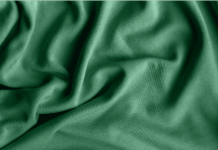Scientists at the Chalmers University of Technology in Gothenburg, Sweden, announced they have developed a new method to purify contaminated water using cellulose-based crystals which they say could reduce toxic dye discharge in the textile industry.
The research, (Cellulose nanocrystals derived from microcrystalline cellulose for selective removal of Janus Green Azo Dye), conducted in collaboration with the Malaviya National Institute of Technology Jaipur in India, found a method based on wood-based nanocrystals that cheaply and easily removes 80% of dye pollutants in wastewater.
How does the new method work?
The researchers have built up solid knowledge about cellulose nanocrystals, tiny nanoparticles that have an outstanding adsorption capacity, which the researchers have now found a way to utilize.
The polluted water passes through the filter with cellulose powder, the pollutants are absorbed, and the sunlight entering the treatment system causes them to break down quickly and efficiently. Laboratory tests have shown that at least 80% of the dye pollutants are removed with the new method and material, and the researchers see good opportunities to further increase the degree of purification.
The treatment requires neither pressure nor heat, and uses sunlight to catalyse the process. The method will be tested in India, one of the developing countries in Asia with extensive textile production, where large amounts of dyes are released into lakes, rivers and streams every year.
By optimising the pH and treatment time, there will be the opportunity to further improve the process in order to produce both irrigation and drinking water.
Moreover, in a previous study, the research group has shown that pollutants of toxic hexavalent chromium, which is common in wastewater from mining, leather and metal industries, could be successfully removed with a similar type of cellulose-based material. The group is also exploring how the research area can contribute to the purification of antibiotic residues.



